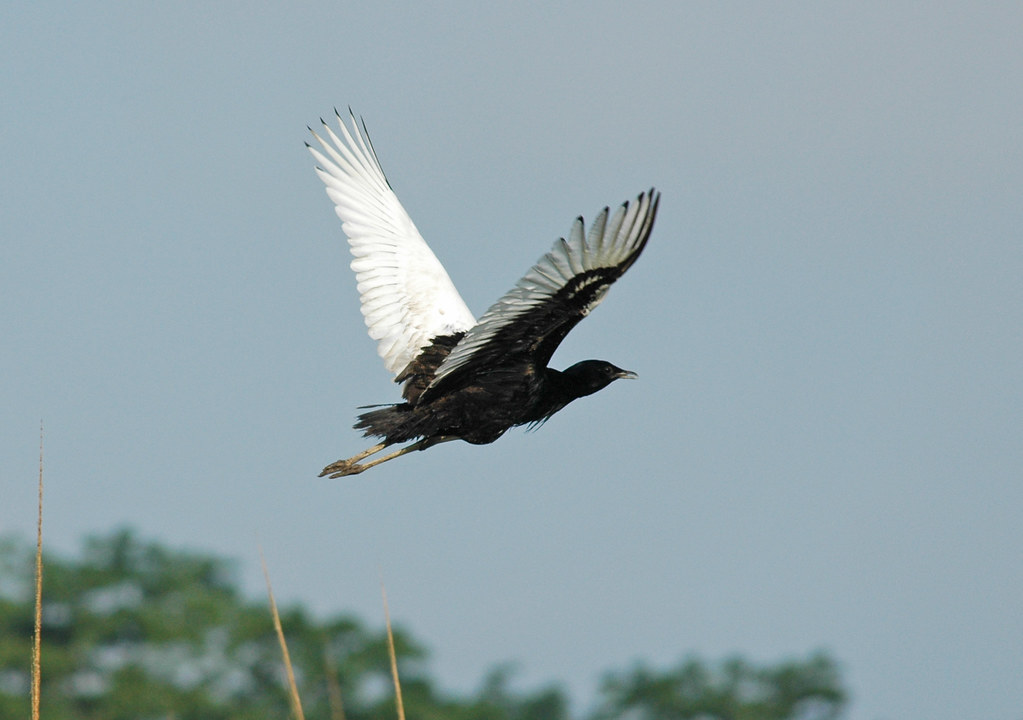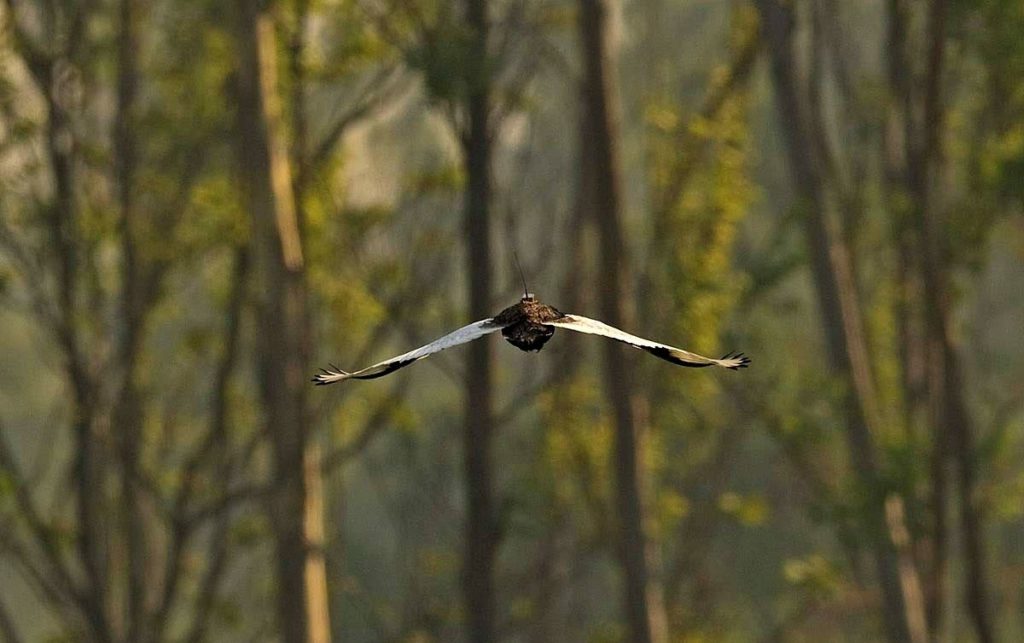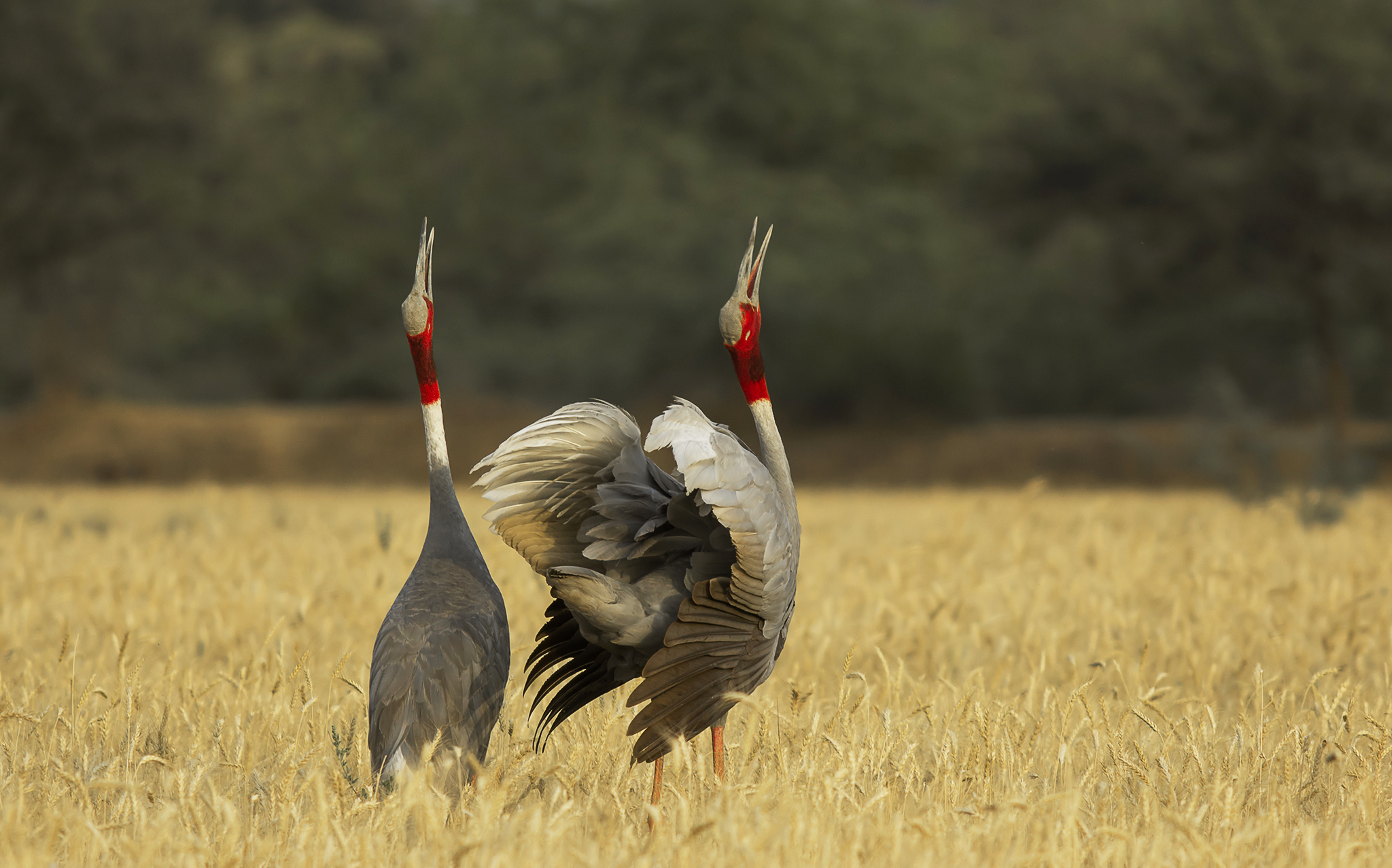
How can the extinction of Bengal floricans, a small bird species, affect us? It is not the end of the world, is it? That’s what most people think. But what we are forgetting is that be it humans, plants or animals, all are part of the web-like interconnected ecosystem and even one species being in danger can have disastrous impacts on the rest of the ecosystem.
According to the International Union for Conservation of Nature (IUCN) Red List, currently, more than 41,000 species are under threat of extinction, which further asserts how the ecosystem is slowly falling apart and how global warming and unsustainable human-led activities in the wildlife habitat are bringing the species to their pitiful ends. And one such bird is the Bengal florican (Houbaropsis bengalensis) whose status has pitifully upgraded from endangered to critically endangered on the IUCN Red List.
Girish Jathar, a scientist and assistant director at the Bombay Natural History Society (BNHS), says, “Bengal florican is an indicator species of dry grassland in the Ganga and Brahmaputra.” Not only for India, it is evident for Nepal too that florican can be a flagship species representing and bringing attention to not just the grassland ecosystem in Koshi Tappu and other areas but also the resources for the protection of other species in those areas. Hence, it is high time stakeholders paid immediate attention to saving Bengal floricans from extinction.
Bengal floricans and the ill fate
With a global population of less than 1,000 mature individuals, Bengal florican is one of the world’s rarest bustards and is found in Cambodia, India and Nepal. In Nepal, this bird lives in alluvial grasslands dominated by Imperata cylindrical, for example, in Shuklaphanta Wildlife Reserve, Bardiya National Park, Chitwan National Park and Koshi Tappu Wildlife Reserve.
The estimated population of this dry grassland bird, which prefers short grassland for feeding and long grassland for breeding, is between 65 to 100 individuals in Nepal.
The major threat to its existence is the rapid destruction of its habitat. Even in the protected areas of Nepal, improper habitat management by ploughing, intensive burning and grass harvesting have been threatening its survival.
Read also: In pursuit of the rare bird that vanishes for half the year
In spite of larger area coverage, only 41 adult Bengal floricans were found in 2017 in Koshi Tappu compared to 47 individuals in 2012 and coming to 2021, the number has become 21. This decreasing ratio further expounds on how dire the situation is and the need to develop a strategy not only for floricans but also for other species that rely on grassland habitats.
Recent studies have found that extreme environmental change triggers an “extinction domino effect”. That is to say because all the species are connected in the web-like ecosystem, the extinction of one species can trigger the extinction of other species too.
That is why it is not just one florican we are talking about but its habitat and the other species that live there too. Moreover, as a bird, Bengal florican plays many roles such as predators, seed dispersers, seed predators and ecosystem engineers. Being an omnivorous bird, it feeds on seeds, flowers, berries, and even insects like grasshoppers, beetles and lizards etc. So it is not impossible to imagine the imbalance that could come if the Bengal florican is extinct.
Time to act

The significance of birds is not something new to Nepali society. Way before scientific papers and research, it has been evident in religious books too. For instance, from the frequent appearance of mythological birds— jatayu and garud in the Hindu epic Ramayana to the worshipping of birds like crows during Tihar, all show how religious scriptures and our ancestors have long understood the impact of birds in the ecosystem.
Even in Christianity and Islam, birds are depicted as protectors, messengers and nutritional sustenance, which is quite true because birds are widespread and respond quickly to changes in the environment. So, they act as messengers for pressing concerns such as climate change just like how florican is acting as a warning system for the falling ecosystem in its habitat.
Although the Government of Nepal, Department of National Parks and Wildlife Conservation is initiating its conservation in close coordination with World Wildlife Fund (WWF) Nepal and other organisations, better-motivated efforts involving the local communities in the buffer zone are needed.
It is said that on an empty stomach, one can not work for conservation. So the conservation approach should be connected with maintaining the livelihood of local people.
Considering the fragile situation of this bustard, more organisations should take proactive initiatives at the grassroots level of the buffer zone. They should also mediate the human-wildlife conflicts because the only ways to reduce the existing threats to Bengal floricans are a better understanding of its ecological requirements and incorporating them into habitat management. This can be done through the collective efforts of the government, local NGOs and INGOs.
After all, it is not just a bird but an integral part of the ecosystem. Time is running out so if we stay behind and lack in action, it would not take long before Bengal floricans become extinct in Nepal.
























